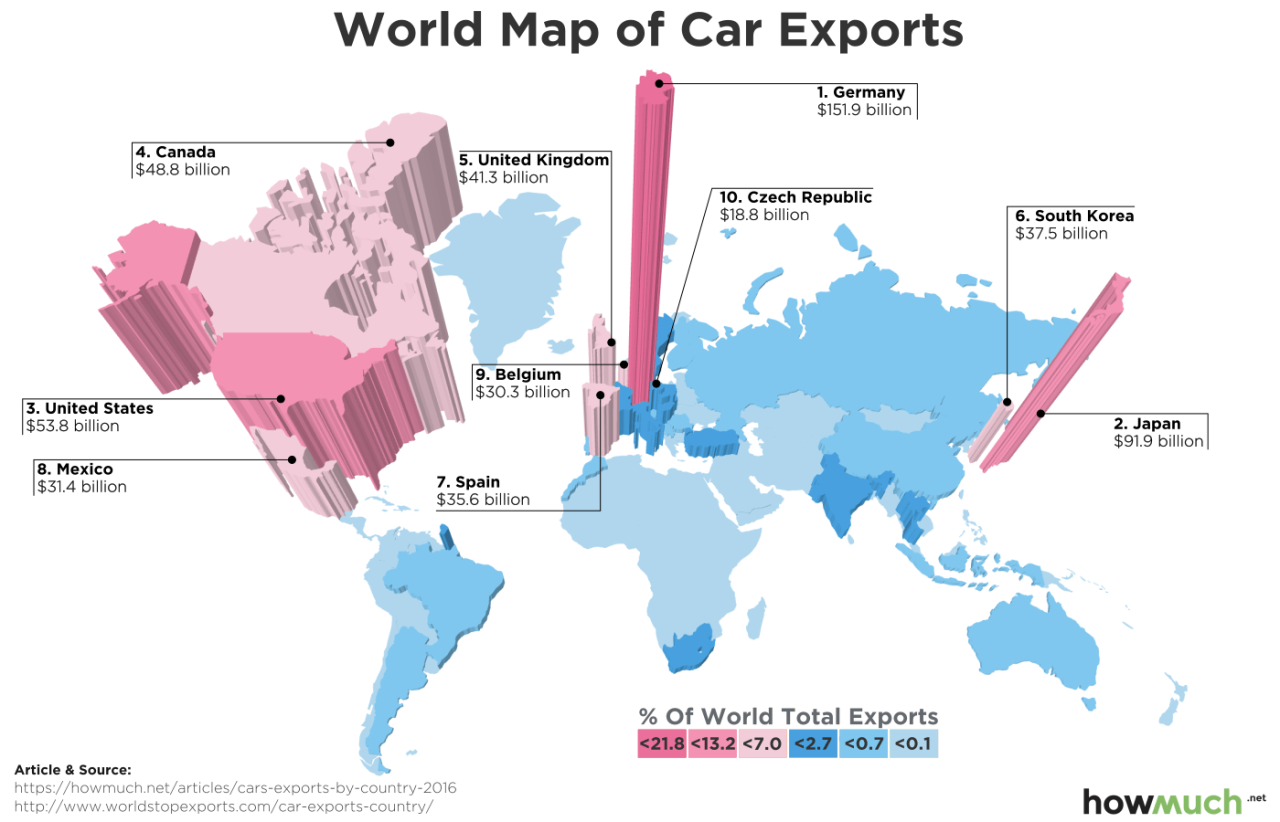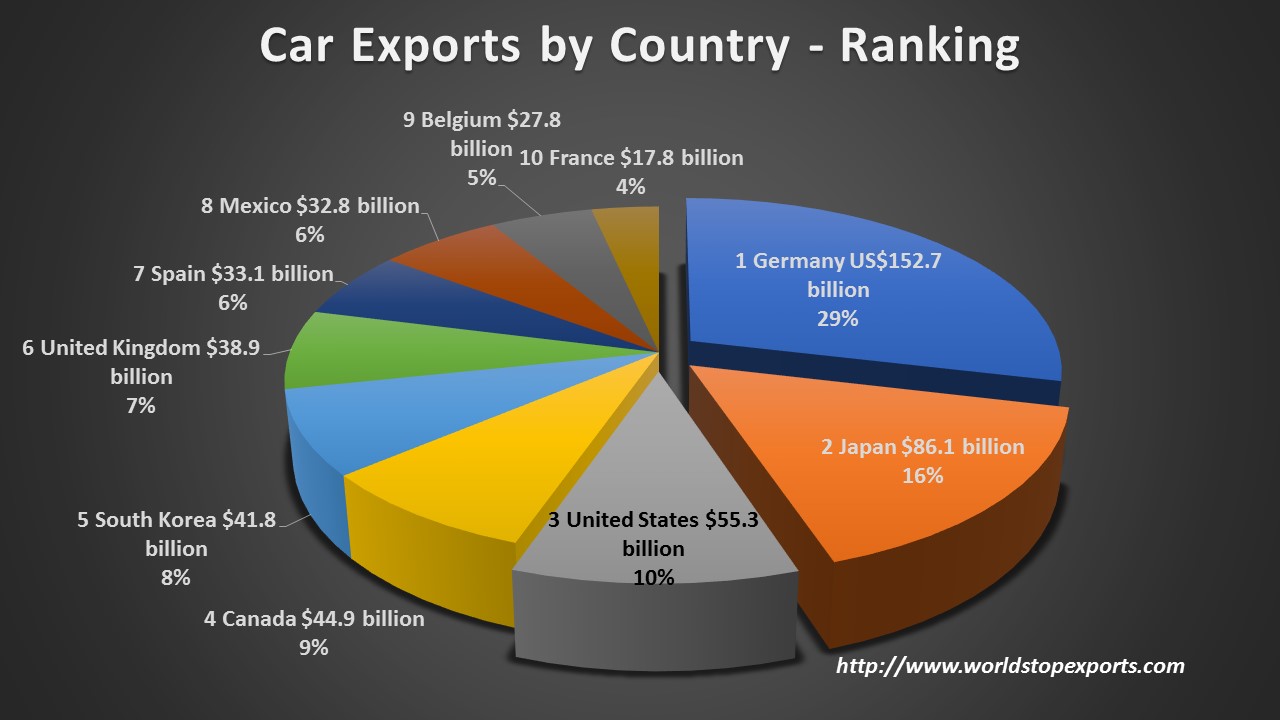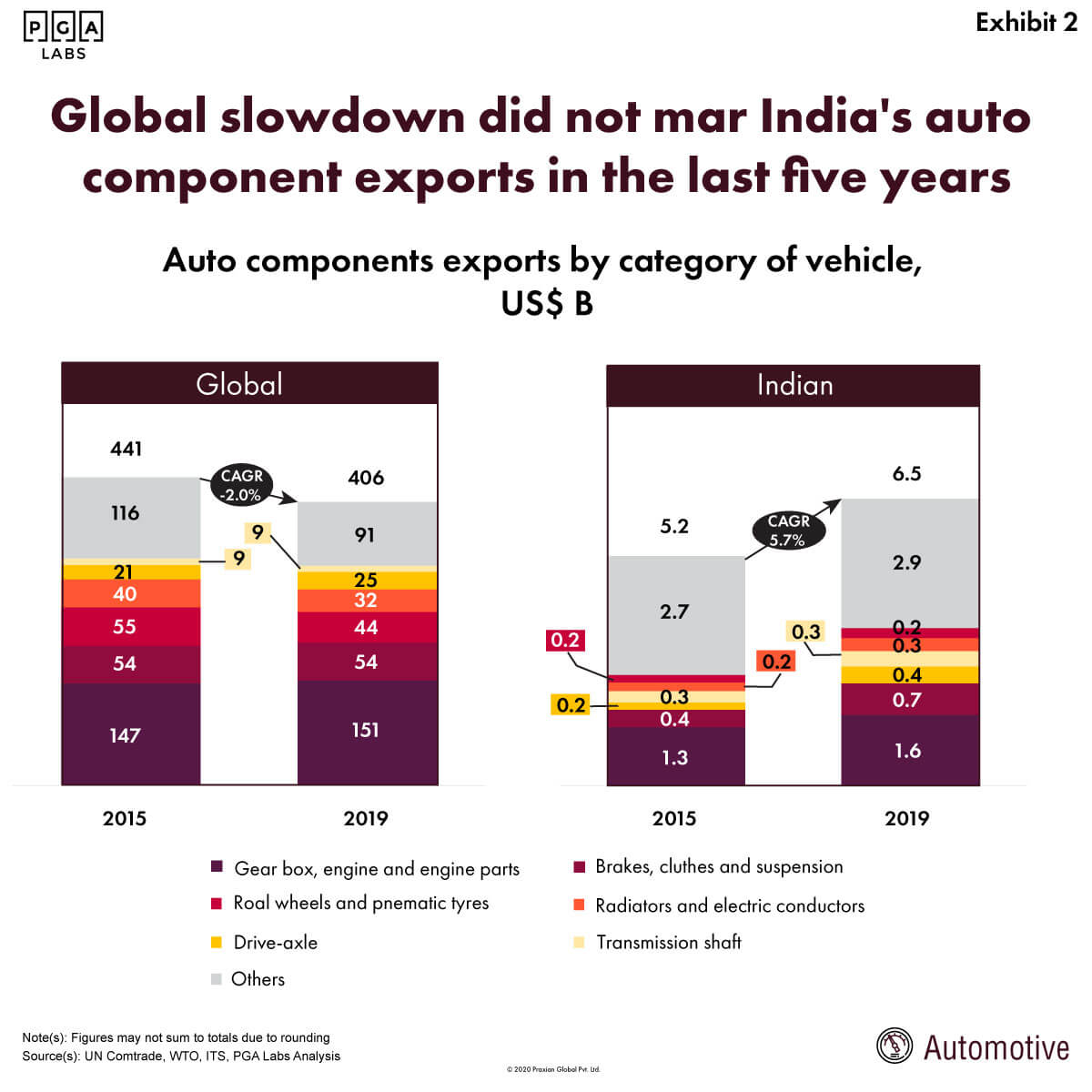Exploring Global trends in auto export and import markets
Delving into the realm of Global trends in auto export and import markets unveils a fascinating landscape of interconnected economies and shifting dynamics. From the bustling trade routes to the innovative technologies shaping the industry, this topic promises a deep dive into the heartbeat of international commerce.
As we navigate through the intricate web of factors influencing auto trade trends, a clearer picture emerges of the challenges and opportunities that lie ahead in this ever-evolving market.
Overview of Global Auto Export and Import Markets

Global auto export and import markets play a crucial role in the transportation industry, facilitating the movement of vehicles across borders. These markets are highly competitive and dynamic, with various factors influencing the flow of cars between countries. Let’s delve into the key players, major countries involved, and the impact of globalization on this industry.
Key Players in Auto Export and Import Markets
The automotive industry is dominated by major players such as Toyota, Volkswagen, General Motors, and Ford, which have a significant presence in both export and import markets. These companies have established supply chains and production facilities in multiple countries to cater to the global demand for vehicles.
Additionally, there are several smaller manufacturers and emerging companies that contribute to the diversity of the market.
Major Countries Involved
Countries like Japan, Germany, the United States, South Korea, and China are major players in the global auto export and import markets. Japan, for example, is known for its high-quality vehicles and advanced technology, while Germany is renowned for luxury car brands like Mercedes-Benz and BMW.
The United States has a strong presence in the market with companies like General Motors and Ford leading the way.
Impact of Globalization on Auto Trade Industry
Globalization has significantly impacted the auto trade industry by opening up new markets, increasing competition, and driving innovation. Companies now have access to a wider customer base and can explore opportunities in emerging economies. However, globalization has also led to challenges such as tariff wars, regulatory differences, and supply chain disruptions.
Overall, the auto trade industry continues to evolve in response to the forces of globalization.
Factors Influencing Auto Export and Import Trends

When it comes to the trends in auto export and import markets, there are several key factors that play a significant role in shaping the direction of these industries. From economic conditions to trade agreements and technological advancements, various elements influence how countries engage in the exchange of automobiles.
Economic Factors Affecting Growth of Auto Exports and Imports
Economic factors such as GDP growth, consumer demand, and exchange rates have a direct impact on the volume of auto exports and imports. A strong economy typically leads to higher consumer spending, which in turn boosts the demand for vehicles both domestically and internationally.
- Fluctuations in exchange rates can affect the competitiveness of a country’s auto exports, making them more or less attractive to foreign buyers.
- Government policies related to taxation and import/export regulations also influence the flow of vehicles across borders.
- Global economic downturns can reduce consumer purchasing power, leading to a decline in auto exports and imports.
Trade Agreements and Tariffs Impact on Auto Markets
Trade agreements and tariffs play a crucial role in shaping the dynamics of auto export and import markets. These agreements can either facilitate or hinder the flow of vehicles between countries, impacting market growth and competitiveness.
- Free trade agreements can lower barriers to entry, making it easier for countries to engage in auto trade without facing high tariffs.
- Tariffs imposed on imported vehicles can increase their prices, affecting consumer demand and the overall volume of auto imports.
- Renegotiation of trade agreements or the introduction of new tariffs can create uncertainty in the market, impacting investment decisions and trade flows.
Role of Technological Advancements in Auto Trade Trends
Technological advancements have revolutionized the auto industry, impacting how vehicles are manufactured, sold, and transported across borders. These advancements have a significant influence on the trends observed in auto trade.
- The rise of electric vehicles and autonomous driving technology is reshaping consumer preferences and leading to changes in the types of vehicles being exported and imported.
- Advancements in logistics and supply chain management have made it easier for companies to engage in international trade, reducing costs and increasing efficiency.
- Digital platforms and online marketplaces have expanded the reach of auto exporters and importers, enabling them to connect with a global customer base more easily.
Emerging Trends in Auto Export and Import Markets
The global auto export and import markets are witnessing several emerging trends that are reshaping the industry landscape and influencing trade dynamics. These trends are crucial in understanding the future trajectory of the automotive sector on a global scale.
Rise of Electric Vehicles in International Trade
Electric vehicles (EVs) have gained significant traction in international trade as countries and manufacturers increasingly prioritize sustainability and emission reduction goals. The shift towards EVs is driven by a combination of factors such as government incentives, environmental regulations, and growing consumer demand for eco-friendly transportation options.
This trend is reshaping the auto export and import markets, with a growing focus on EV production, distribution, and infrastructure development to support the widespread adoption of electric vehicles globally.
Impact of Sustainability and Environmental Regulations
Sustainability and environmental regulations are playing a crucial role in shaping auto export and import trends. Countries around the world are implementing stringent emission standards and regulations to reduce carbon footprints and combat climate change. This has led to a greater emphasis on eco-friendly vehicles, including electric and hybrid models, in international trade.
Automakers are adapting to these regulations by investing in cleaner technologies and sustainable practices to meet the evolving environmental requirements. As a result, sustainability considerations are becoming increasingly central to the decision-making processes of auto exporters and importers.
Growing Importance of Digital Platforms
Digital platforms are revolutionizing the global auto trade by facilitating seamless transactions, enhancing market access, and optimizing supply chain management. Online platforms enable auto exporters and importers to connect with a broader network of buyers and sellers, streamline logistics operations, and access real-time market data.
The growing reliance on digital solutions in the automotive industry is transforming traditional trade practices and accelerating the pace of transactions in the global marketplace. As digital platforms continue to evolve and integrate advanced technologies like blockchain and AI, they are expected to play an even more significant role in shaping the future of auto export and import markets.
Regional Variances in Auto Export and Import Markets
When it comes to auto trade, different regions around the world exhibit unique trends and dynamics in both export and import markets. Let’s delve into the comparison of key regions like North America, Europe, Asia, and others, highlighting the challenges, opportunities, and geopolitical factors that shape the auto trade landscape.
North America
North America, specifically the United States, Mexico, and Canada, form a crucial hub for auto manufacturing and trade. The region has a well-established supply chain network, allowing for efficient movement of vehicles and parts. However, trade tensions, such as those seen in recent years, can disrupt this flow and impact the overall trade volume.
Europe
Europe boasts a diverse auto market with strong players like Germany, France, and Italy. The region is known for its luxury car brands and advanced technology in vehicle manufacturing. Challenges in Europe include stringent emission regulations and the shift towards electric vehicles, which can affect traditional auto exports.
Asia
Asia, particularly China, Japan, South Korea, and India, is a powerhouse in auto production and exports. These countries have significant market shares globally and are key players in electric vehicle development. However, trade disputes, currency fluctuations, and geopolitical tensions can impact trade relationships and market access.
Other Regions
Other regions like South America, Africa, and the Middle East also play roles in the auto trade landscape. These regions face challenges such as infrastructure limitations, political instability, and varying consumer preferences. However, emerging markets in these regions present opportunities for growth and expansion in the auto trade sector.
Summary

In conclusion, Global trends in auto export and import markets paint a vivid picture of the interconnected nature of trade on a global scale. From regional variances to emerging trends, the landscape continues to evolve, presenting both challenges and opportunities for stakeholders in the industry.
Question Bank
What are the main factors influencing auto export and import trends?
The main factors include economic conditions, trade agreements, tariffs, and technological advancements.
How do regional variances impact auto trade dynamics?
Regional differences like market size, consumer preferences, and regulatory frameworks play a significant role in shaping auto trade dynamics.
What are the emerging trends in global auto export and import markets?
Emerging trends include the rise of electric vehicles, sustainability regulations, and the growing role of digital platforms.




